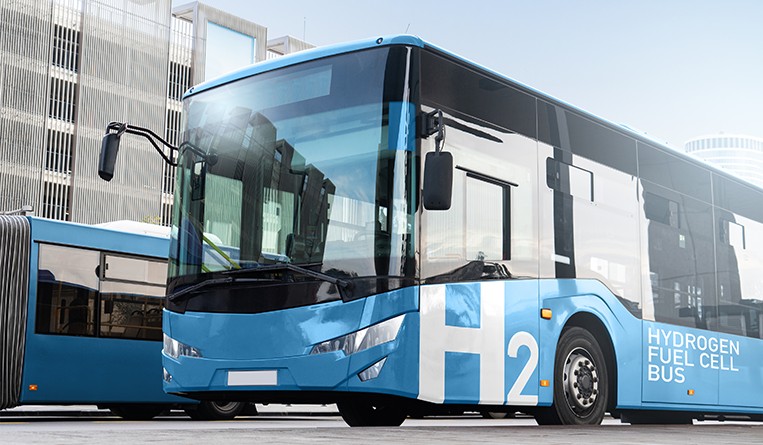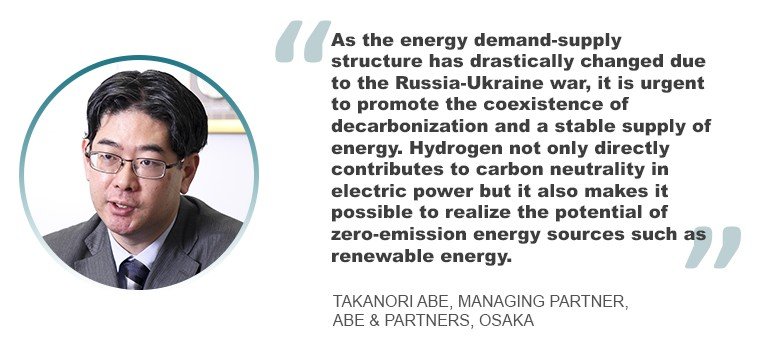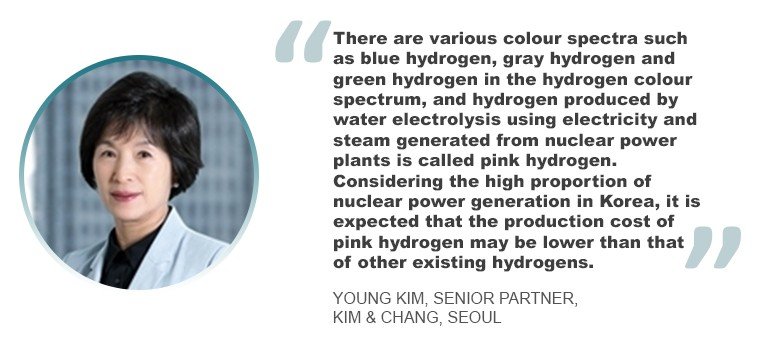Hydrogen patents shift to clean technologies
31 July 2023

A recent report from the European Patent Office and the International Energy Agency claims that Japan and Europe are now setting the pace for innovation in low-emission hydrogen technologies, leading the world in hydrogen patenting. The paper examined global patent data to give a thorough overview of innovation in hydrogen technologies, covering the complete spectrum of technology, including end-use applications and hydrogen supply, storage, distribution and transformation.
The report found that across all segments of the hydrogen value chain, low-emission innovations generated more than twice the number of international patents than established technologies, with hydrogen production technologies accounting for the greatest share of all hydrogen patents between 2011 and 2020.
While most of the energy used to produce hydrogen today comes from fossil fuels, electrolysis and other low-emission methods are increasingly being patented. Nearly 80 percent of all hydrogen production-related patents in 2020 were driven by technologies motivated by environmental concerns with electrolysis innovation seeing the biggest growth.
Despite the attention from policy-makers and the media on hydrogen’s potential to decarbonize long-distance transportation, aviation, power production and heating, the automotive industry continues to be the main area of concentration for innovators with the same impetus not yet seen in other end-use sectors. The survey also found that over half of the US$10 billion in venture capital invested in hydrogen-related businesses over the last 10 years went to start-ups with patents.

In Japan, then-Prime Minister Yoshihide Suga in 2020 declared the country as aiming to achieve carbon neutral status by 2050. In 2021, the Basic Energy Plan was issued where hydrogen and ammonia are aimed to occupy 1 percent of power configuration by 2030.
“To do so, building a strong and large-scale supply chain and accelerating social implementation is required,” said Takanori Abe, managing partner at Abe & Partners in Osaka. “In addition, as the energy demand-supply structure has drastically changed due to the Russia-Ukraine war, it is urgent to promote the coexistence of decarbonization and a stable supply of energy. Hydrogen not only directly contributes to carbon neutrality in electric power, but it also makes it possible to realize the potential of zero-emission energy sources such as renewable energy. It also enables us to utilize fossil fuel in a clean way.”
He added: “However, the cost of hydrogen is more expensive than the current fossil fuel and decreasing the cost by large-scale supply chain or technology development is an issue.”
The role of hydrogen
In South Korea, patent applications for fuel cells have been active since the early 2000s after fuel cells were adopted as the next-generation growth engine at the national level. Through government support, Korean companies such as Hyundai Motor Company and Kia Corporation were able to build the fastest mass production system for the commercialization of fuel cells, hydrogen vehicles and hydrogen commercial vehicles using fuel cells of any country in the world.
On the other hand, since South Korea is a country with a low self-sufficiency rate of energy, it has been actively reviewing the possibility of hydrogen generation by fuel cells since the 2010s as an alternative energy source to reduce the dependence on imports of fossil fuels, according to Young Kim, a senior partner at Kim & Chang in Seoul.
In 2019, the Korean government announced a roadmap to revitalize the hydrogen economy and selected hydrogen vehicles and fuel cell generation as two major growth pillars. Kim said that, against this backdrop, patent applications in the hydrogen sector in Korea have been most significant, particularly in the use of hydrogen value chains and the mobility and power generation sector associated with fuel cells.
However, in the 2020s, the importance of securing technology in the field of hydrogen production and storage or transportation has also been emphasized in South Korea, and the Korean government is actively implementing policies to support this. Therefore, it is expected that the number of patent applications will increase not only in the field of utilization where Korea has strengths but also in the field of hydrogen production and storage or transportation.
However, due to its regional characteristics, Korea is not rich in renewable energy resources such as solar and wind power. Therefore, the production cost for producing green hydrogen is still higher compared to other countries rich in renewable energy resources such as South America, Europe and the United States. There is also a risk that the rate of decrease in the production cost of hydrogen in Korea may be relatively slow even if the unit cost of renewable energy generation decreases due to technological development.

Reportedly, the new Korean government which took power in 2022 has pledged to meet the rapidly increasing demand for hydrogen in Korea by 2050 and achieve carbon neutral targets. It has also declared active support for the nuclear power generation.
“As you are aware, there are various colour spectra such as blue hydrogen, gray hydrogen and green hydrogen in the hydrogen colour spectrum, and hydrogen produced by water electrolysis using electricity and steam generated from nuclear power plants is called pink hydrogen. Considering the high proportion of nuclear power generation in Korea, it is expected that the production cost of pink hydrogen may be lower than that of other existing hydrogens,” said Kim.
She also added that this is the first time that South Korea has enacted the hydrogen law and that the government is pushing for policy support by including pink hydrogen in the definition of clean hydrogen under the revised law. However, there is a possibility that controversy may arise as to whether the pink hydrogen can be recognized as clean hydrogen that does not substantially emit carbon, such as green hydrogen.
Green technology in the future
In 2021, the South Korean government announced that it would convert domestic and foreign hydrogen production into a clean hydrogen supply system by supplying 7.9 million tons of hydrogen per year as 100 percent clean hydrogen (hydrogen without carbon emissions) as of 2050. In line with this, many private companies and research institutes have also made numerous investments in the hydrogen sector. However, unlike the areas such as hydrogen mobility and hydrogen power generation that South Korea has previously been doing well in, research on the areas of hydrogen production, storage or transportation is poor.
“To lead the hydrogen sector in the future, it is urgent to secure source technology,” said Kim. “The fact that hydrogen patent applications are shifting to areas of clean technology, such as hydrolysis, CCUS and liquefied hydrogen transport, suggests that as a concrete means to realize carbon neutrality, there is a global preemptive movement to recognize the possibility of hydrogen and to develop and preoccupy the source technology.”
She further said that, for this reason, beyond the traditional IP business such as patent applications and litigation, there will be an anticipated increase in the number of extended IP businesses, such as technology transactions, licenses and M&As, to identify and secure key source technology trends such as water electrolysis technology not only in the public sector such as the government but also in the private sector.
- Excel V. Dyquiangco






